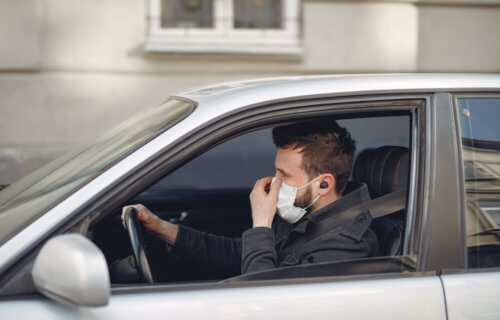RIVERSIDE, Calif. — Just in case you need one more reason to consider switching over to remote work, researchers from the University of California, Riverside find many commuters may be inhaling an unhealthy level of cancer-causing chemicals each time they drive back and forth to work. Consequently, these commuters may be at a higher risk of passing on birth defects or developing cancer.
Researchers explain that when it comes to any potentially harmful chemical, it all comes down to levels of exposure. Even among known carcinogens, scientists consider exposure to low levels relatively harmless. Now, when it comes to workplaces and offices, the government regulates such areas to ensure there are no harmful amounts of any chemical. When it comes to private spaces like cars, though, regulation is sorely lacking.
Two chemicals are increasing cancer risk in California
Getting down to specifics, the two chemicals in question for this study are benzene and formaldehyde. Manufacturers use both of these chemicals regularly in the building of cars. Both can cause cancer at or above a certain level of exposure. This new research conducted at UC Riverside indicates that the average California commuter is breathing in too much of both chemicals during their daily commute.
While both chemicals may cause cancer, formaldehyde exposure also has a link to reproductive and developmental toxicity.
“These chemicals are very volatile, moving easily from plastics and textiles to the air that you breathe,” says David Volz, UCR professor of environmental toxicology, in a university release.
Study authors calculated the average daily dose of benzene and formaldehyde a California driver would inhale during a commute to work lasting at least 20 minutes. This led them to the shocking conclusion that as much as 90 percent of the populations of Los Angeles, San Diego, Santa Clara, Orange, and Alameda counties are at least 10 percent more likely to develop cancer due to car chemical exposure.
“Of course, there is a range of exposure that depends on how long you’re in the car, and how much of the compounds your car is emitting,” says lead study author Aalekhya Reddam, a graduate student in the Volz laboratory.
Previous research performed by this study’s authors had also concluded car commuters experience more exposure to a flame retardant and carcinogen called TDCIPP — or chlorinated tris.
How can commuters cut their exposure to chemicals?
Should the public stop using cars? That may be a bit extreme, but researchers advise opening up the windows while driving as often as possible.
“At least with some air flow, you’d be diluting the concentration of these chemicals inside your car,” Reddam suggests.
As far as a more permanent solution goes, researchers would like to see both benzene and formaldehyde eliminated from car manufacturing altogether. As of now, manufacturers use benzene to produce synthetic fibers and formaldehyde to bind plastics together.
“There should be alternatives to these chemicals to achieve the same goals during vehicle manufacturing,” Volz concludes. “If so, these should be used.”
The study is published in Environment International.
